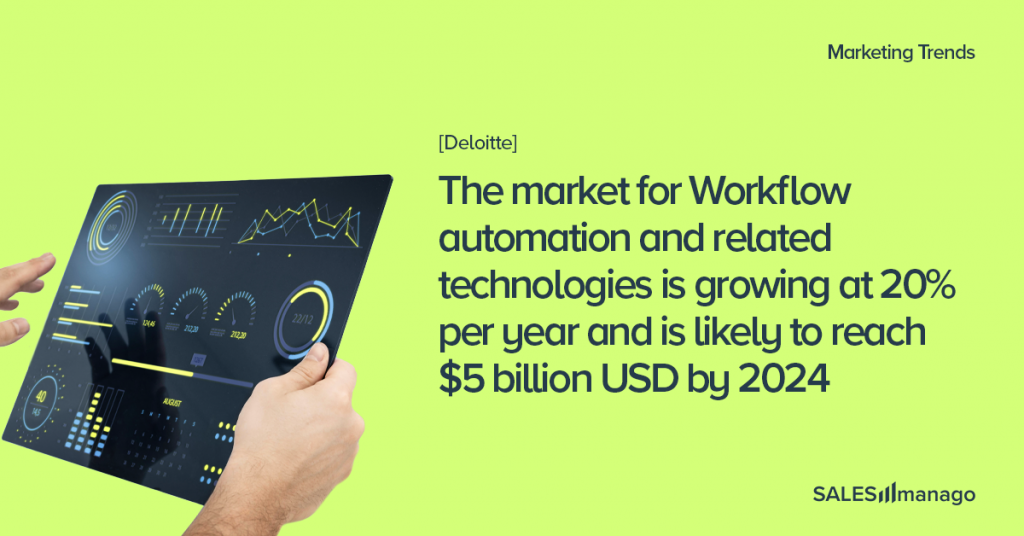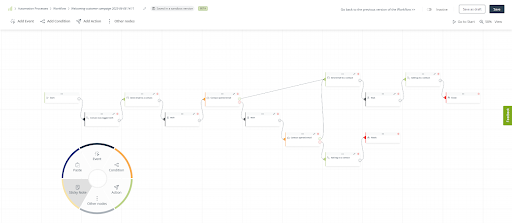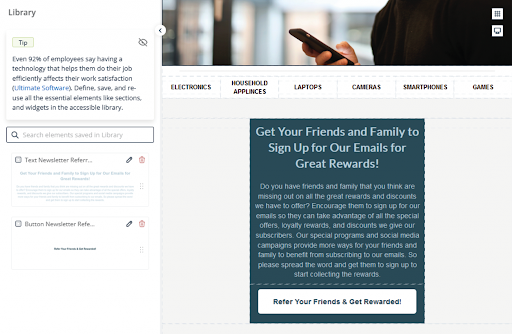
Step into the world of omnichannel automation as we explore the top three trends in eCommerce marketing. Discover the power of multichannel attribution, leveraging customer data for personalized experiences, and meeting changing consumer expectations. Get ready to dive deeper into the secrets to success in the realm of omnichannel automation.
In the dynamic world of eCommerce, staying ahead of the curve is crucial for success. One area that continues to shape the industry is omnichannel automation. The market for Workflow automation and related technologies is growing at 20% per year and is likely to reach $5 billion USD by 2024 (Deloitte). By seamlessly integrating multiple channels and automating key processes, businesses can provide a superior customer experience, boost efficiency, and drive growth. In this article, we will explore the top three trends in omnichannel automation, enabling eCommerce marketing specialists to thrive in the digital landscape.
Trend 1: The Rise of Multichannel Attribution in Omnichannel Automation
The concept of multichannel attribution has long been prevalent in digital marketing. However, with the advent of omnichannel strategies, its significance has skyrocketed. Marketers now seek comprehensive insights into customer journeys that seamlessly transition between online and offline channels.

Multichannel attribution has gained immense popularity as businesses strive to validate the impact of their online campaigns on offline sales. It allows for a holistic view of customer behavior and empowers marketers to make data-driven decisions.
- Multichannel attribution enables businesses to track omnichannel success with greater accuracy, essential in the post-pandemic landscape.
- The merging of offline and online channels has transformed traditional digital tactics and expanded the scope of multichannel attribution.
- Direct-to-consumer brands have successfully utilized this trend to enhance conversions, promote effectively, develop better products, and build stronger customer relationships.
Multichannel attribution provides a comprehensive understanding of customer journeys, enabling businesses to optimize their marketing efforts across various channels.
Read more about a dashboard built to measure omnichannel attribution >>
Useful tools:
- Google Analytics: A widely used and robust tool that provides valuable insights into user behavior across multiple channels. It allows businesses to track and measure conversions, analyze customer interactions, and implement multichannel attribution effectively.
- Adobe Analytics: A comprehensive analytics solution that enables businesses to collect and analyze data from various channels. It offers advanced attribution models and reporting capabilities, empowering marketers to optimize their omnichannel strategies and drive growth.
- SALESmanago’s eCommerce Dashboard: A powerful feature for marketers, allowing them to identify key areas of opportunity and maximize the impact of their actions. Detailed omnichannel revenue attribution provides users with a comprehensive overview of different marketing activities’ performance.
Tips to jump on this bandwagon:
- Integrate your data sources: Ensure seamless data collection across channels to achieve accurate multichannel attribution. Consider using a CDP that will collect and unify your customer data into 360-customer profiles.
- Set clear objectives: Define specific goals for your multichannel attribution efforts to align them with your overall marketing strategy.
- Utilize automation: Leverage automation tools like CDP-powered Workflow to streamline data collection and analysis, saving time and improving efficiency.
Trend 2: Leveraging Customer Data for Enhanced Omnichannel Experiences
eCommerce players have long relied on customer data and relationships to drive sales. Now, the focus is on extending this model to other sales channels to create personalized experiences that resonate with customers.

With the majority of consumers using multiple channels in their buying journey, delivering consistent experiences across all touchpoints has become critical. Leveraging customer data enables businesses to provide tailored experiences, both online and offline, fostering brand loyalty and engagement.
- Consumers expect the same experience at every channel they use, making data-driven personalization essential.
- Some companies successfully applied offline customer insights to create an online shopping experience that closely mirrors the in-store personalized model.
- Tracking online data and leveraging it across channels unifies the customer experience, improving engagement and satisfaction.
Leveraging customer data allows businesses to create personalized omnichannel experiences that enhance brand loyalty and engagement.
Useful tools:
- SALESmanago Workflow&CDP: A merge to enhance your processes with the power of customer data. Workflows integrate seamlessly with Customer Data Platform (CDP), enabling you to leverage valuable insights for personalized and targeted communication. Unleash the potential of data-driven automation and achieve better results with every campaign.
Tips to jump on this bandwagon:
- Implement data collection mechanisms: Set up robust systems to gather and consolidate customer data from various touchpoints.
- Analyze and segment data: Use advanced analytics to derive valuable insights and segment your audience for targeted marketing efforts.
- Automate personalized experiences: Leverage automation tools to deliver tailored messages, recommendations, and offers based on customer data.
Trend 3: Meeting Changing Consumer Expectations in the Omnichannel Landscape
Consumer expectations are the driving force behind market trends. Keeping a close eye on evolving consumer demands is crucial for businesses to succeed in the omnichannel landscape.

Consumers now expect consistency, speed, and personalized experiences across all channels. Brands that fail to meet these expectations may risk losing customers, while those that deliver on them can foster loyalty and drive growth.
- Forrester reports that 69% of U.S. consumers prefer brands that provide consistent experiences across physical stores and online platforms.
- It takes 12 positive customer experiences to make up for one negative experience. (Ruby Newell-Legner’s “Understanding Customers”)
- According to Epsilon, personalization is a significant driver of purchase decisions, with 80% of consumers more likely to make a purchase when brands offer tailored experiences.
Meeting changing consumer expectations by delivering consistent, speedy, and personalized experiences across channels is crucial for business success in the omnichannel landscape.
Useful tools:
- Zendesk: A customer service platform that offers omnichannel support, including email, live chat, and social media management. It enables businesses to provide consistent and efficient customer service, meeting consumer expectations for speedy and responsive interactions.
Tips to jump on this bandwagon:
- Maintain consistent brand messaging: Align your messaging across all channels to provide a cohesive and recognizable brand experience. Use brand elements libraries, such as the one available with our Email Design Studio, for consistent messaging and time saving
- Streamline customer service processes: Invest in automation and integration to deliver fast and efficient customer support across channels.
- Leverage data for personalization: Utilize customer data to offer tailored recommendations, discounts, and personalized content across channels.
3 Trends in Omnichannel Automation—Which Ones Do You Like Best?
In conclusion, the top three trends in omnichannel automation for 2023 hold immense potential for eCommerce marketing specialists. Multichannel attribution empowers businesses to measure the impact of their campaigns accurately. Using customer data to drive omnichannel experiences allows for personalized interactions that boost engagement. Meeting changing consumer expectations, including consistency, speed, and personalization, is crucial for sustainable growth.
As we navigate the dynamic landscape of eCommerce, it is essential to stay on top of these trends and leverage automation tools and strategies to unlock their full potential. By embracing omnichannel automation, eCommerce marketing specialists can create seamless customer experiences, drive digital transformation, and stay ahead in an ever-evolving industry.
Remember, the key to success lies in adapting to these trends and tailoring them to your unique business needs. Which of these trends resonates most with you? We invite you to share your thoughts and experiences as we continue to shape the future of omnichannel automation.
 Follow
Follow
















